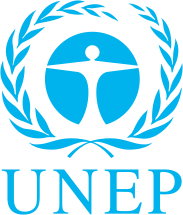When talking about Air Quality, the first countries that comes to people's mind are China and India, and more generally Asia. Even on the World Air Quality Index project, Asia has always been, since the begining, our strong focus (most likely because this is where our HQ is located!).
Few years ago, in 2012, we decided to extend our scope to cover the other seven continents, starting with Oceania, and then following with Europe and North America, South America.
But one of seven continents, namely Africa, has been surprisingly lacking behind. We received many inquiries about this lack of data, and one of the last was from Said E. who wrote:
Thanks for making the World Air Quality Index project site. It gives very useful information.
My only concern is why Africa is not considered.
For information I am a moroccan citizen.
There is actually a good reason for worrying about Air Quality in Northen Africa and Middle East, because of the Saharan dust. This amount of dust is so massive that it is even able to cross continents, and move towards south America but also Europe.
--
We have been doing a lot of research on the available Air Quality monitoring in Africa (and Middle East), and the outcome is that only two countries in Africa are providing real-time data in Africa: Those two countries are Senegal and South Africa.
Fortunately, the World Health Organization (WHO) has been doing a very good work at making the updated 2014 inventory of the Outdoor Air Quality, available from who.int/phe/health_topics/outdoorair/en/.

From their inventory, it appears that except from the Republics of Senegal and South Africa which we already inventoried on the World Air Quality Index project, 4 other countries are also providing readings, namely: Ghana, Liberia, Tanzania and Mauritius.
Surprisingly, there is no mention of Morocco for which we found evidences of existing monitoring stations. The other surprise is for Kenya, which is the country where United Nations Environmental Program (UNEP) HQ is located. One would expect that the UNEP takes the initative to setup a monitoring station on the rooftop of their building, just like the US consultates are now doing all over the world.
Not all of the countries mentioned in the WHO report is providing continuous readings: for some of them, the monitoring is a temporary project and the data is only available for a limited period of time. Anyways, as soon as we get hold of the data from the 4 new countries, we will be updating the World Air Quality Index project website. Meanwhile, one can get an idea of the current Air Quality condition with the map below, which is based on the real-time daily average remote satellite readings .
| Ghana | Accra - 4 residential and 1 roadside station in Accra | |
| Liberia | Buchanan (rural) - 1 station: rural, 500m away from community, Osris Sanniquellie (rural) - 1 station: rural, within the community, Osiris monitors | |
| Mauritius | Beau Bassin/Rose Hill, Coromandel - 1 station: in town of Beau Bassin/Rose Hill Bramsthan, Flacq - 1 station: in Placq (rural) Midlands - 1 station: rural Port Louis - 1 station: urban St Louis city | |
| Senegal | Dakar - 3 stations in capital city: 2 traffic, 1 urban for PM10; 1 station traffic for PM2.5 | |
| South Africa | Cape Town (urban, total) - 7 stations: 6 urban (incl regional urban), 1 industrial Durban - 5 stations: urban, mostly residential Highveld Priority Area Network - 5 stations: residential Johannesburg - 6 stations: 2 no info, 3 background, 1 urbna/commercial/industrial Tshwane (Pretoria) (total, urban) - 6 stations: 3 no info, 3 residential/industrial Vaal Priority Area - 5 stations: urban, mostly residential Waterberg - 3 stations: residential | |
| Unit. Rep. of Tanzania | Morogoro - 1 station, 2 measurement (during dry and wet season) |
--
For the readers interested in the Middle East, the WHO is inventorying quite a few countries with monitoring data available. The one already inventoried on the World Air Quality Index project are United Arab Emirates, Iran, Qatar and Lebanon.
Please note that at the time of writing, the Air Quality monitoring System for Abu Dhabi / UAE is not working, and has been in maintenance for several months (since Summer 2014). The monitoring System for Dubai is however working.
| Afghanistan | Kabul - ISAF HQ - 1 station: urban Mazar-e Sharif - Camp Northern Lights - 1 station: urban outskirts | |
| Egypt | Cairo - 48 stations (8 industrial, 9 urban, 5 residential, 10 traffic, 4 remote, 12 mixed) Delta cities - 13 stations (4 industrial, 4 urban, 2 residential, 1 remote, 2 mixed) | |
| Iran | Ahvaz - 1 station (residential) Khoramabad - 8 stations, covering the metropolis area Tehran - 7 stations with valid data: no information given about sites | |
| Jordan | Amman - 4 stations: 2 high and 2 low pollution areas | |
| Lebanon | Beirut - 3 stations in 1 city Tripoli - 01/2008-06/2008 (6 months) | |
| Pakistan | Karachi - 3 stations in various location: 1 unknown, 1 industrial/residential, 1 commercial/residential Lahore - Johar Town - 1 station: residential Peshwar - 1 station: N/A Rawalpindi - 1 station: residential | |
| Bahrain | Hamad Town - 1 Residential urban station Hidd - 1 Residential urban station Ma'ameer - 1 Residential Industrial station (Mixed) Nabih Saleh - 1 Urban background station Ras Hayan - 1 Rural background station | |
| Oman | Muscat - 4 stations in 1 city: 1 commercial, 2 industrial, 1 unknown | |
| Qatar | Al Wakrah - Mobile Station Doha - 3 stations | |
| Saudi Arabia | Jeddah - 7 stations: 3 residential, 3 urban and 1 suburban | |
| United Arab Emirates | Abu Dhabi - 2 stations: 2 urban/residential Al Ain - Urban/ Residential -Al Ain School - 1 station: urban/residential Al Gharbia - Biya Zayed - 1 station: no information given |
--

